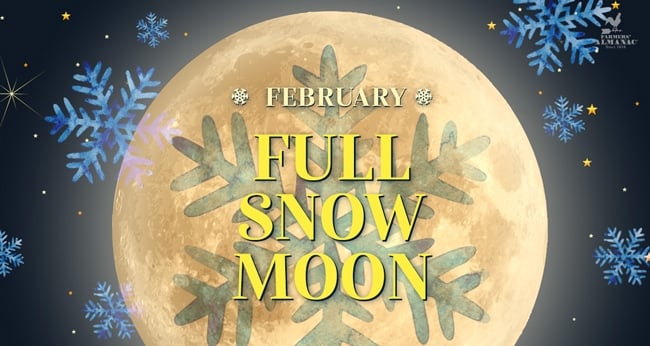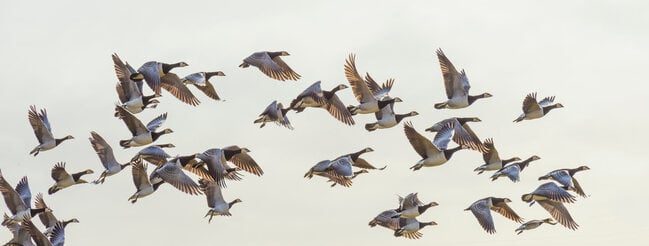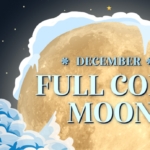Full Moon February 2025 – Snow Moon And Alternative Names
How did February's full moon get it's name?


The full Moon February 2025 occurs during the shortest calendar month of the year. Traditionally known as the “Snow” Moon, February’s Moon has many alternative names as well—even a name when February has no full Moon at all: “Black” Moon. Learn more about this curious astronomical anomaly and more …
Full Moon February 2025: Wednesday, February 12
Peak Illumination: 8:53 a.m. EST
Full Moon Calendar – Times And Dates
Why Is The February Full Moon The “Snow” Moon? Plus, Other Chilly Names
It’s easy enough to recognize why February’s full Moon is commonly called the “Snow Moon.” Depending on location and climate conditions, February can be one of the snowiest months of the year. This is especially true throughout the Ohio River Valley in the eastern and central US, as well as in the coastal Pacific Northwest. Furthermore, at this mid-winter point without many other strongly distinguishing characteristics—no plants to harvest, no new plants blooming—snow can be the most prominent trait of the month.
Similar chilly names are also common. The Mahican tribe of the northeastern US and into Wisconsin, for example, clarify that this is the “Deep Snow Moon” while the Oneida tribe of upstate New York and the Great Lakes region call this the “Midwinter Moon.”
In some Celtic histories, February’s full Moon is referred to as the “Ice Moon.” In Maine, the Abenaki tribe calls this Moon “Makes Branches Fall In Pieces Moon,” which is exactly what can happen when ice builds up on tree limbs. The Lakota of the northern plains have a similar name for February’s full Moon, “When Trees Crack Because of Cold Moon.”
In different areas where climates vary, so too do the full Moon’s names vary to reflect the local seasons. For example, the Comanche tribe of the southern plains, where temperatures may begin warming in late February, call this the “Sleet Moon” to indicate the possibility of hints of spring. Similarly, “Frost Sparkling in the Sun Moon” is from the Arapaho tribe of the Great Plains, where snowfall is less but the cold still appears as thick frost.
Even further south, some spring-like names may begin to appear as early as February. The Catawba tribe of South Carolina refer to this month’s full Moon as the “First Flower Moon” to mark that eagerly awaited first sign of spring.
Names Noting Seasonal Deprivation
After months of winter weather, February can be a month of low food supplies with no new plants to replenish supplies. Because of this, the February full Moon has several names that refer to hunger or scarcity, including the simple “Hunger Moon” or “Hungry Moon” from the Cherokee tribe of North Carolina. The Cherokee also refer to this Moon as the “Bone Moon” or “Bony Moon” for late winter weight loss or needing to utilize bones as a food source when other foods have become scarce.
Other tribes have referred to the February full Moon by hunger-related names as well. The Choctaw of the southeastern US call this the “Moon of Big Famine” while the Kalapuya tribe of the Pacific Northwest use the name “Out of Food Moon,” showing that such deprivations are common in many areas at this time of year.
Animals in February
Many months reference animals in full Moon names, such as January’s Wolf Moon or July’s Buck Moon. In February, many animals are hibernating or otherwise as scarce as fresh plants, but some tribes do choose animals for names.
The Haida of Alaska call this the “Goose Moon” as geese begin to return to their northern nesting grounds even before hints of spring may appear. The Omaha tribe of the central plains have similar naming, with February’s full Moon called “Moon When Geese Come Home.”

The Tlingit of the Pacific Northwest use the name “Black Bear Moon” as black bears begin to stir and move about in February. Likewise, the Ojibwe of southern Canada and the northern plains calls this the “When the Bear Cubs Are Born Moon” to show that important life cycle.
No Full Moon at All?
An important distinction of February’s Moon phases is that the month may not have any full Moon at all. Because the lunar phase cycle is 29.5 days, when there is a full Moon at the very end of January, there will be no full Moon recorded that February. That absence is often called the “Black Moon” which keeps the naming cycle synced with other months.
The disappearance of February’s full Moon happens approximately every 19 years, most recently in 2018. The next February without a full Moon will be in 2037, followed by 2075 and 2094.
The year 2048 will be a very rare February full Moon occurrence indeed – when the full Moon occurs on Leap Day, February 29. The timing of this one day every four years coincides so infrequently with the lunar phase cycle that there will only be four Leap Day full Moons this millennium, with 2048 being the first. The other three Leap Day February full Moons will occur in 2132, 2216, and 2376.
February is a unique Moon month indeed, not only for the naming of its full Moon, but for when there is no full Moon at all or when we can all leap for joy at the Leap Day full Moon.
Join The Discussion
What is your favorite name for Februarys full Moon?
If you could rename the Snow Moon, what would you call it?
Related Articles
March Worm Moon And Alternative Names
Subscribe To The Farmhouse – Our Members-only Community!
Track the phases of the moon and time of moon rise by ZIP code, city / State or Country with our Moon Phase Calendar. Get the Moon Phase calendar for the entire year when you join The Farmhouse, our growing eCommunity.

Melissa Mayntz
Melissa Mayntz is a writer who specializes in birds and birding, though her work spans a wide range—from folklore to healthy living. Her first book, Migration: Exploring the Remarkable Journeys of Birds was published in 2020. Mayntz also writes for National Wildlife Magazine and The Spruce. Find her at MelissaMayntz.com.






What a wonderful post–fascinating!
I love all the Cherokee Full Moon names especially but learning a lot of other Native American’s titles of full moons is so interesting. Learning about the leap year full moon is very interesting.
knowledge each day starts my day , enjoying these
We are very happy to hear you are enjoying this content. We appreciate having you here in our community!
Hi Carmen Diaz, no, no relation! Thanks for your note!
Thank U Almanac… for bringing these amazing attractions that endure forever in our minds & visions that we can see & feel closely to without being out there on the view !!!.. So wonderful…*****
I love my Farmer’s Almanac. Give me many hours of useful information.
Susan Higgins, daughter of David and Vera? Moon’ faces are peculiar characters. They can describe many things. Indians still follow the moon to personalize their instincts. Abundant Life and Prosperity can depend from a moon reading. No joke!
I live here in Abbeville,SC a place where there is very little snow,sleet,freezing rain or any other precipitation other than rain.When we see a snow flake around here we head to the grocery stores and buy all the bread and milk there is!
For the most part we really have great weather but the school children would really like to have a few or at least one “snow day”!!!
Native Americans really had a close affiliation with the moon and its phases. I enjoy these reports each month on the names given to the full moon for that month by various Indian tribes.
Hi Valerie, Check out our winter forecast here (and the weather map with your zone). You can also keep track of what we’re forecasting here (which is the same information that’s in your 2016 Almanac): https://www.farmersalmanac.com/long-range-weather-forecastsouth-central-us/
This is exactly right on point
THAT SNOW AND BLOWING SNOW, THE VIDEO COULD HAVE BEEN TAKEN IN DUBUQUE, IA ON 2-1-2015. I THINK OUR TOTAL WAS 12.4 INCHES
History does repeat itself … weather-wise! Be careful everyone and have fun shoveling!
Interesting but the coming four full blood moon tetrads are much more interesting.
Farmers used the month of Feb. to get farm equipment in top shape for spring. Not much else could be done on the farms except prepare for the coming farming season, and the ladies would quilt, sew and mend clothes for all the family. Heard these stories and others about life on the farms as I was growing up.
Gee…the Full Snow Moon in 1940 (Valentine’s Day Blizzard) …I guess we haven’t created sufficient CO2 to preclude the repeat Full Snow Moon (Valentine’s Day Blizzard) of 2014…Gee!